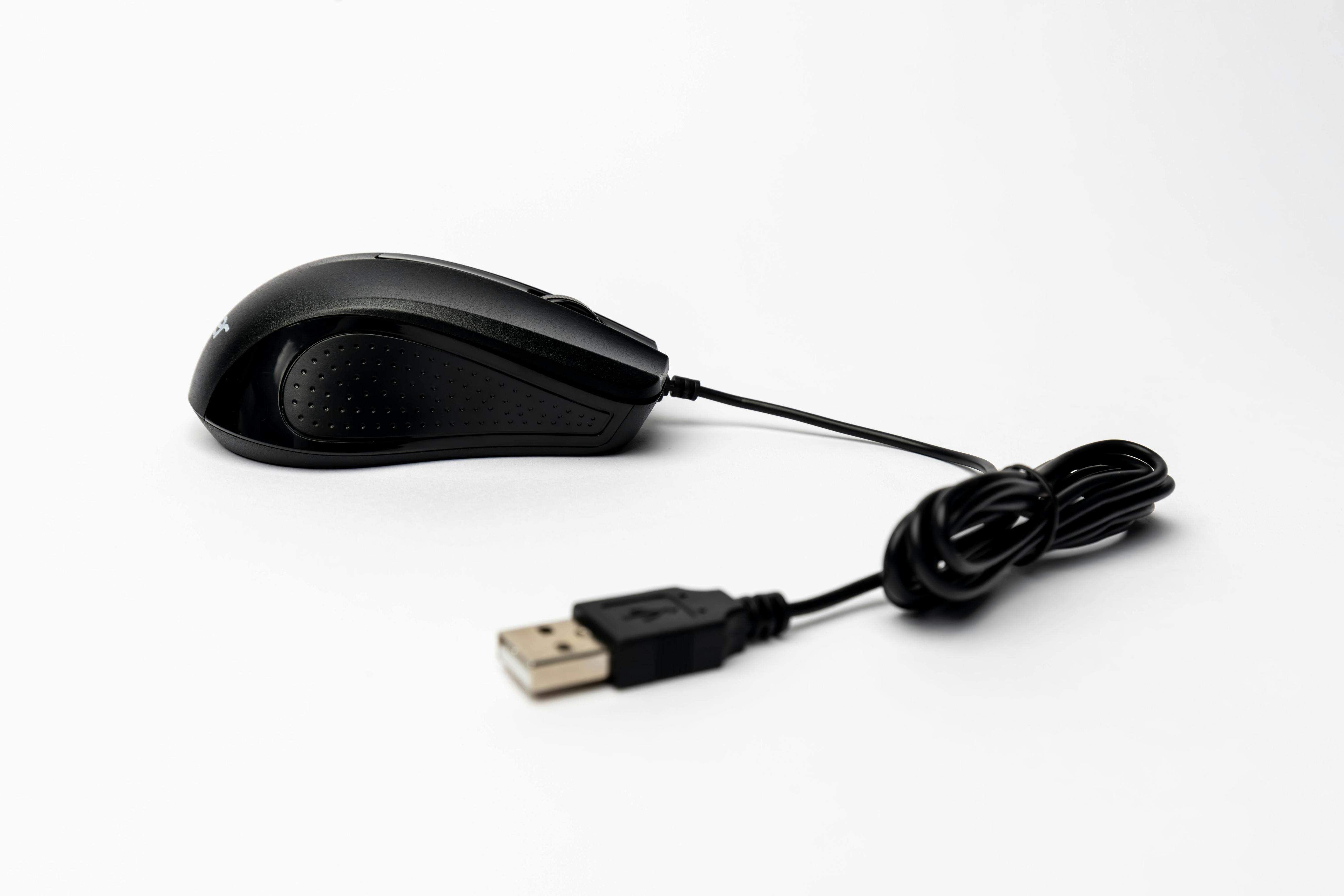Introduction
Nothing is more frustrating than sitting down to work, only to find that your wired mouse has stopped functioning. Whether you’re in the middle of an important task or settling in for a gaming session, mouse issues can disrupt your flow. Understanding the root cause of the problem is crucial. Here, we will explore common reasons your wired mouse might not be working and provide clear, step-by-step solutions to get it running smoothly again.
With numerous potential culprits, ranging from simple connection issues to complex driver problems, troubleshooting can seem daunting. However, by breaking down the process into manageable steps, we can efficiently identify and solve the issue. Read on to discover practical tips and solutions to get your wired mouse back in action.

Checking the Basics
Before diving into more complex troubleshooting methods, start with the basics:
- Check the Connection: Ensure your mouse is securely plugged into the USB port. Sometimes, a loose connection can cause functionality issues.
- Try a Different Port: Your current USB port might be faulty. Try connecting the mouse to another port.
- Restart Your Computer: A simple restart can often resolve minor software and hardware glitches.
- Inspect the Mouse: Look for any visible signs of damage, such as frayed cables or a damaged connector.
These basic steps can often resolve many mouse issues. If your mouse is still not working, it’s time to move on to investigating software and driver-related problems.
Software and Driver Issues
At times, software glitches or outdated drivers can cause wired mouse malfunctions. Follow these steps to tackle potential software and driver issues:
-
Update Your Mouse Driver:
- Open your Device Manager (right-click on the Start button and select ‘Device Manager’).
- Locate the ‘Mice and other pointing devices’ section.
- Right-click on your mouse and select ‘Update driver.’
- Follow the on-screen instructions to update the driver.
-
Reinstall Your Mouse Driver:
- Go to Device Manager.
- Right-click on your mouse and select ‘Uninstall device.’
- Restart your computer—it will automatically reinstall the mouse driver.
-
Check for Software Conflicts:
- Some software applications might interfere with your mouse. Disable or uninstall any new software you installed recently.
- Use Safe Mode to determine if a third-party application is causing the issue. If your mouse works in Safe Mode, a recently installed application might be to blame.
By addressing these potential software issues, you often rectify the problem and restore your mouse’s functionality.
Operating System Compatibility
Incompatibility with your operating system can also be an issue. Ensure your operating system is up-to-date:
-
Update Your Operating System:
- For Windows: Go to ‘Settings’ > ‘Update & Security’ > ‘Windows Update.’
- For macOS: Go to ‘System Preferences’ > ‘Software Update.’
-
Compatibility Mode:
- If the mouse stopped working after a recent OS update, try running it in compatibility mode.
- Find the mouse driver executable file, right-click, and select ‘Properties.’
- Go to the ‘Compatibility’ tab, check the box for ‘Run this program in compatibility mode for,’ and select an earlier version of the OS.
-
USB Controller Update:
- Sometimes the USB controllers need updating. In the Device Manager, locate the ‘Universal Serial Bus controllers’ section and update each driver.
Keeping your operating system compatible and updated ensures that both hardware and software function together seamlessly.

Common Hardware Problems
When software solutions don’t resolve the issue, it’s worth considering potential hardware problems:
-
Inspect the Cable:
- Look for wear and tear. Sometimes cables can become frayed or damaged over time.
-
Test the Mouse on Another Computer:
- Plug your mouse into another device. If it works, the issue is with your computer. If it doesn’t, the mouse is likely defective.
-
Check Internal Components:
- If you’re comfortable doing so, open the mouse (some models allow this) to check for any loose connections or damaged components.
- Ensure no foreign particles have entered the mouse, potentially causing disruptions.
-
Age of the Mouse:
- If your mouse is very old, it might simply have reached the end of its lifespan. Consider replacing it with a new one.
Addressing hardware issues may require more effort, but it’s crucial for ensuring the long-term functionality of your device.
Advanced Troubleshooting
Should the problem persist, advanced troubleshooting steps may be necessary:
-
Power Settings:
- Go to Device Manager, locate USB Root Hub devices under ‘Universal Serial Bus Controllers,’ right-click and select ‘Properties.’
- Go to the ‘Power Management’ tab and uncheck ‘Allow the computer to turn off this device to save power.’
-
BIOS/UEFI Settings:
- Restart your computer and enter the BIOS/UEFI settings (typically by pressing a key like F2, F10, or Del during startup).
- Ensure USB ports are enabled and not disabled at a firmware level.
These advanced steps are more involved but can resolve deeper, underlying issues that basic troubleshooting might miss.

When to Seek Professional Help
Sometimes, despite all troubleshooting efforts, the mouse remains unresponsive. At this point, seeking professional help is advisable:
-
Consult a Technician:
- Visit a computer repair shop for a thorough diagnosis.
- Professionals have the tools and expertise to identify and fix issues more efficiently.
-
Manufacturer Support:
- Contact the mouse manufacturer for support. They can provide specific troubleshooting steps or replace a faulty device if it’s under warranty.
Professional assistance ensures that the issue is correctly diagnosed and resolved.
Conclusion
A wired mouse can stop working for various reasons, from simple connection issues to complex software and hardware problems. By following this guide, you can systematically troubleshoot and resolve many of these issues independently. Remember that regular maintenance, such as software updates and proper hardware handling, can prevent many common problems. If troubleshooting fails, don’t hesitate to seek professional help to get back on track.
Frequently Asked Questions
What are the first steps if my wired mouse stops working?
Begin with basics: check the connection, try a different port, restart your computer, and inspect the mouse for damage. If these steps don’t work, consider software updates and hardware inspections.
How can I update my wired mouse driver?
Go to Device Manager, find your mouse under ‘Mice and other pointing devices,’ right-click, and select ‘Update driver.’ Follow the on-screen instructions to complete the update.
When should I replace my wired mouse instead of fixing it?
If you’ve exhausted all troubleshooting steps and the mouse still doesn’t work, or if it’s visibly damaged or very old, consider replacing it to avoid further disruptions.
